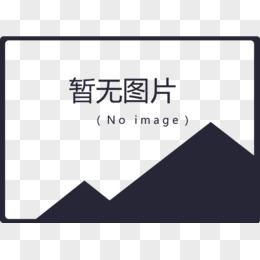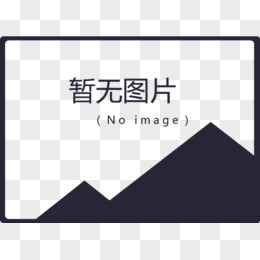cocos2d-x有物理引擎吗在Cocos2d-x3.0里面如何使用新版的物理引擎,所采用的例子就是制作一个简单的应用,里面有一个篮球,你可以通过旋转你的手机来改变重力的方向,同时篮球碰到屏幕边界可以反弹。
这个教程假设你已经学过前面的教程《如何使用Cocos2d-x3.0来制作一个简单的iphone游戏》,或者有同等相关经验也可以。
好了,让我们开始学习物理引擎吧!
创建一个空的工程
执行Cocos2d-x-3.0beta2\tools\project-creator目录下的create_project.py,创建命为boxball。如果你直接编译并且运行的话,你将会看到一个很酷的例子,里面展示了Box2d的许多内容。然后,这个教程的目的,我们将从0开始,创建一个篮球反弹的应用,这样我们就可以更好地理解那个范例的具体原理。
因此,让我们把HelloWorld模板里面的内容都删除掉,因为我们要从0开始。把HelloWorldScene.h里面的内容替换成下面的代码:
#ifndef __HELLOWORLD_SCENE_H__
#define __HELLOWORLD_SCENE_H__
#include "cocos2d.h"
USING_NS_CC;
class HelloWorld : public cocos2d::Layer
{
public:
Sprite* _ball;
PhysicsWorld* m_world;
void setPhyWorld(PhysicsWorld* world){ m_world = world; };
static cocos2d::Scene* createScene();
virtual bool init();
CREATE_FUNC(HelloWorld);
};
#endif // __HELLOWORLD_SCENE_H__
同时修改HelloWorldScene.cpp文件:
#include "HelloWorldScene.h"
Scene* HelloWorld::createScene()
{
auto scene = Scene::createWithPhysics();
scene->getPhysicsWorld()->setDebugDrawMask(PhysicsWorld::DEBUGDRAW_ALL);
auto layer = HelloWorld::create();
layer->setPhyWorld(scene->getPhysicsWorld());
scene->addChild(layer);
return scene;
}
bool HelloWorld::init()
{
if ( !Layer::init() )
{
return false;
}
return true;
}
编译并运行,看到一篇黑色,这是一个空的项目。好了,现在让我们开始创建物理场景吧。
创建世界相关理论
Cocos2d-x-3.0中对物理系统进行了封装,开发过程中可不用再纠结与box2d和chipmunk的接口。Physics integration大大方便了物理系统的使用,有兴趣的话可以去看看这篇文章http://www.ityran.com/archives/5431
通过createWithPhysics()方法创建一个带有物理效果的Scene,然后将需要添加物理效果的层加入其中:
auto scene = Scene::createWithPhysics();
scene->getPhysicsWorld()->setDebugDrawMask(PhysicsWorld::DEBUGDRAW_ALL);
auto layer = HelloWorld::create();
layer->setPhyWorld(scene->getPhysicsWorld());
scene->addChild(layer);
DebugDraw
开启DebugDraw
DebugDraw对需要使用物理系统的我们来说是个很有用的方法。它可将碰撞体的形状、关节等等全部绘制出来,方便我们观察物体及整个场景的可碰撞区域。
scene->getPhysicsWorld()->setDebugDrawMask(PhysicsWorld::DEBUGDRAW_ALL);
添加篮球精灵
好了,下载我制作的篮球图片,并且把它添加到工程里去吧。下载完后,直接拖到Resources文件夹下。
接下来,在HelloWorldScene.cpp文件顶部添加下面的代码:
同时在HelloWorld类中添加以下成员变量:
Sprite *_ball;
然后,在HelloWorldScene.cpp的init方法中加入下面的代码:
auto visibleSize = Director::getInstance()->getVisibleSize();
auto origin = Director::getInstance()->getVisibleOrigin();
_ball = Sprite::create("Ball.jpg", Rect(0, 0, 52, 52));
_ball->setPosition(Point(400,600));
auto ballBody = PhysicsBody::createCircle(_ball->getContentSize().width / 2);
_ball->setPhysicsBody(ballBody);
this->addChild(_ball);
auto edgeSp = Sprite::create();
auto boundBody = PhysicsBody::createEdgeBox(visibleSize, PHYSICSBODY_MATERIAL_DEFAULT, 3);
edgeSp->setPosition(Point(visibleSize.width / 2, visibleSize.height / 2));
edgeSp->setPhysicsBody(boundBody); this->addChild(edgeSp); edgeSp->setTag(0);
return true;
与Box2d是不是有很大的不同?3.0新的物理引擎接口为我们省去了许多麻烦。使得我们一点点来解释一下。下面,我会一段段地重复上面的代码,那样可以解释地更加清楚一些。
auto winSize = Director::getInstance()->getWinSize();
_ball = Sprite::create("Ball.jpg", Rect(0, 0, 52, 52));
_ball->setPosition(Point(100, 100));
this->addChild(_ball);
首先,我们往屏幕中间加入一个精灵。如果你看了前面的教程的话,这里应该没有什么问题。
接下来为弹珠添加刚体属性:首先定义一个刚体body
auto ballBody = PhysicsBody::createCircle(_ball->getContentSize().width / 2);
_ball->setPhysicsBody(ballBody);
接下来,我们创建world对象。
auto edgeSp = Sprite::create();
auto boundBody = PhysicsBody::createEdgeBox(visibleSize, PHYSICSBODY_MATERIAL_DEFAULT, 3);
edgeSp->setPosition(Point(visibleSize.width / 2, visibleSize.height / 2));
edgeSp->setPhysicsBody(boundBody); this->addChild(edgeSp); edgeSp->setTag(0);
编译并运行,你应该可以看到球会往下掉,碰到边界会有弹性效果。
完成加速计控制
如果我们可以通过倾斜屏幕让球朝着屏幕的某个方向运行,那将会很棒。首先,我们需要在init方法里面加入下面的代码:
this->setAccelerometerEnabled(true);
在HelloWorld类中添加新的方法:
virtual void onAcceleration(Acceleration* acc, Event* unused_event);
并完善:
void HelloWorld::onAcceleration(Acceleration* acc, Event* unused_event)
{
Vect gravity(-acc->y * 15, acc->x * 15);
m_world->setGravity(gravity);
}
这个教程假设你已经学过前面的教程《如何使用Cocos2d-x3.0来制作一个简单的iphone游戏》,或者有同等相关经验也可以。
好了,让我们开始学习物理引擎吧!
创建一个空的工程
执行Cocos2d-x-3.0beta2\tools\project-creator目录下的create_project.py,创建命为boxball。如果你直接编译并且运行的话,你将会看到一个很酷的例子,里面展示了Box2d的许多内容。然后,这个教程的目的,我们将从0开始,创建一个篮球反弹的应用,这样我们就可以更好地理解那个范例的具体原理。
因此,让我们把HelloWorld模板里面的内容都删除掉,因为我们要从0开始。把HelloWorldScene.h里面的内容替换成下面的代码:
#ifndef __HELLOWORLD_SCENE_H__
#define __HELLOWORLD_SCENE_H__
#include "cocos2d.h"
USING_NS_CC;
class HelloWorld : public cocos2d::Layer
{
public:
Sprite* _ball;
PhysicsWorld* m_world;
void setPhyWorld(PhysicsWorld* world){ m_world = world; };
static cocos2d::Scene* createScene();
virtual bool init();
CREATE_FUNC(HelloWorld);
};
#endif // __HELLOWORLD_SCENE_H__
同时修改HelloWorldScene.cpp文件:
#include "HelloWorldScene.h"
Scene* HelloWorld::createScene()
{
auto scene = Scene::createWithPhysics();
scene->getPhysicsWorld()->setDebugDrawMask(PhysicsWorld::DEBUGDRAW_ALL);
auto layer = HelloWorld::create();
layer->setPhyWorld(scene->getPhysicsWorld());
scene->addChild(layer);
return scene;
}
bool HelloWorld::init()
{
if ( !Layer::init() )
{
return false;
}
return true;
}
编译并运行,看到一篇黑色,这是一个空的项目。好了,现在让我们开始创建物理场景吧。
创建世界相关理论
Cocos2d-x-3.0中对物理系统进行了封装,开发过程中可不用再纠结与box2d和chipmunk的接口。Physics integration大大方便了物理系统的使用,有兴趣的话可以去看看这篇文章http://www.ityran.com/archives/5431
通过createWithPhysics()方法创建一个带有物理效果的Scene,然后将需要添加物理效果的层加入其中:
auto scene = Scene::createWithPhysics();
scene->getPhysicsWorld()->setDebugDrawMask(PhysicsWorld::DEBUGDRAW_ALL);
auto layer = HelloWorld::create();
layer->setPhyWorld(scene->getPhysicsWorld());
scene->addChild(layer);
DebugDraw
开启DebugDraw
DebugDraw对需要使用物理系统的我们来说是个很有用的方法。它可将碰撞体的形状、关节等等全部绘制出来,方便我们观察物体及整个场景的可碰撞区域。
scene->getPhysicsWorld()->setDebugDrawMask(PhysicsWorld::DEBUGDRAW_ALL);
添加篮球精灵
好了,下载我制作的篮球图片,并且把它添加到工程里去吧。下载完后,直接拖到Resources文件夹下。
接下来,在HelloWorldScene.cpp文件顶部添加下面的代码:
同时在HelloWorld类中添加以下成员变量:
Sprite *_ball;
然后,在HelloWorldScene.cpp的init方法中加入下面的代码:
auto visibleSize = Director::getInstance()->getVisibleSize();
auto origin = Director::getInstance()->getVisibleOrigin();
_ball = Sprite::create("Ball.jpg", Rect(0, 0, 52, 52));
_ball->setPosition(Point(400,600));
auto ballBody = PhysicsBody::createCircle(_ball->getContentSize().width / 2);
_ball->setPhysicsBody(ballBody);
this->addChild(_ball);
auto edgeSp = Sprite::create();
auto boundBody = PhysicsBody::createEdgeBox(visibleSize, PHYSICSBODY_MATERIAL_DEFAULT, 3);
edgeSp->setPosition(Point(visibleSize.width / 2, visibleSize.height / 2));
edgeSp->setPhysicsBody(boundBody); this->addChild(edgeSp); edgeSp->setTag(0);
return true;
与Box2d是不是有很大的不同?3.0新的物理引擎接口为我们省去了许多麻烦。使得我们一点点来解释一下。下面,我会一段段地重复上面的代码,那样可以解释地更加清楚一些。
auto winSize = Director::getInstance()->getWinSize();
_ball = Sprite::create("Ball.jpg", Rect(0, 0, 52, 52));
_ball->setPosition(Point(100, 100));
this->addChild(_ball);
首先,我们往屏幕中间加入一个精灵。如果你看了前面的教程的话,这里应该没有什么问题。
接下来为弹珠添加刚体属性:首先定义一个刚体body
auto ballBody = PhysicsBody::createCircle(_ball->getContentSize().width / 2);
_ball->setPhysicsBody(ballBody);
接下来,我们创建world对象。
auto edgeSp = Sprite::create();
auto boundBody = PhysicsBody::createEdgeBox(visibleSize, PHYSICSBODY_MATERIAL_DEFAULT, 3);
edgeSp->setPosition(Point(visibleSize.width / 2, visibleSize.height / 2));
edgeSp->setPhysicsBody(boundBody); this->addChild(edgeSp); edgeSp->setTag(0);
编译并运行,你应该可以看到球会往下掉,碰到边界会有弹性效果。
完成加速计控制
如果我们可以通过倾斜屏幕让球朝着屏幕的某个方向运行,那将会很棒。首先,我们需要在init方法里面加入下面的代码:
this->setAccelerometerEnabled(true);
在HelloWorld类中添加新的方法:
virtual void onAcceleration(Acceleration* acc, Event* unused_event);
并完善:
void HelloWorld::onAcceleration(Acceleration* acc, Event* unused_event)
{
Vect gravity(-acc->y * 15, acc->x * 15);
m_world->setGravity(gravity);
}






